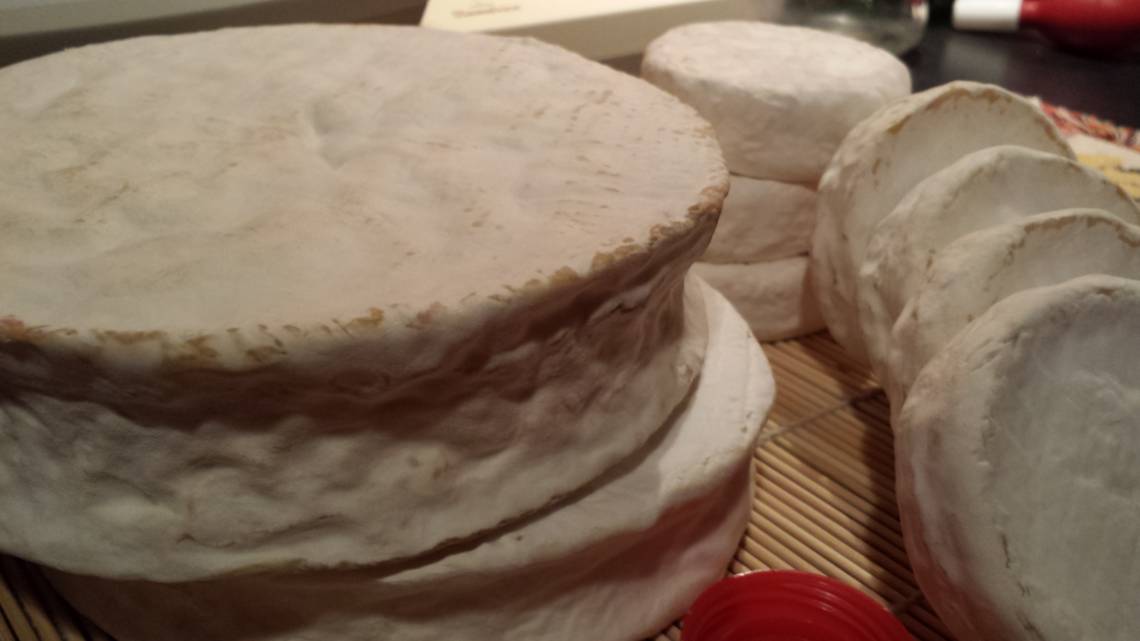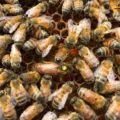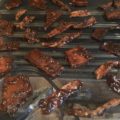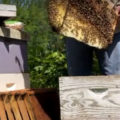Brie cheese is pretty easy to make once you are set up to maintain the aging environment. Like most mold-ripened cheeses, it has to sit in a higher humidity to allow the white coat to develop. I have made brie from a number of recipes, but the one that consistently yields my desired results is the Brie Jim Wallace over at New England Cheesemaking.
Since recipes are all over, and cheesemakers don’t usually deviate from the recipe at hand, I’ll spare you of the ingredients and general process since this is all documented at the link above. However, I do want to spell out some parts of the process making this cheese that you should pay attention to.
As I mentioned… it’s easy to make Brie. However, if you are a beginner, Brie is not the cheese to start with. It’s not considered advanced, but it takes a dedicated environment to produce what these soft cheeses want to become.
On some cheeses, you cut the curd, but in the case of Brie, you ladle out thin layers into the mould. This helps preserve the whey and butterfat that you want to maintain in this cheese. How fast the whey drains from the curd dictates the acidity (among other things) and dryness of the cheese. You’ll fill up the mould, and then you need to leave it time to sink down before ladling in more. There will be flipping and allowance to drain over the first day or so.
For cheesemaking, I now use the Anova immersion circulator and I don’t know what I’d do without it. You can really control the temperature, including holding the same temperature for as long as you need, and also manage the ramping of temperatures needed in most cheesemaking. If you’re really a techie, here’s the Anova Culinary Sous Vide Precision Cooker w WI-FI and Bluetooth
, the same unit, but has Wifi.
After the cheese has been salted and air-dried, it is important that the cheese is put in the right temperature and humidity. Recipes talk about the surface of the cheese not being too wet or dry. We want it just perfect to allow the bloom of the desired yeasts and molds.
As the white mold grows, you’ll “pat” it down each time you flip it to allow it to make somewhat of a skin that becomes the familiar white coat. Here again, humidity is critical. I have made Brie so many times and have had various results until my knowledge of things became more solid. If the white mold is growing too fast (typically from too high of a humidity,) it can introduce a strong ammonia smell to your cave… and of course, the taste of the cheese! I usually make a few small rounds that I can cut and sample during the journey to affinage. We’ll often think of a cheese needing time, and patience when really, some may just need to be eaten while they are still delicious.
Fact is, Brie and most soft cheese are to be eaten sooner then aged hard cheeses. Brie has become one of those cheeses that I’ll make when I want to enjoy something sooner.
The first picture below is labeled as a “failed brie.” That’s right. sometimes, things just don’t work out. The curd on this particular one hardened up a bit… maybe because (as you can see) the shallow depth of the cheese. It likely dried out a bit more, but I wouldn’t rule out another flaw in the process. The end result, however, turned out to be a pleasantly sharp “hard cheese.” If I knew how I did it, I’d totally do it again.
I’d love to hear your questions… or even your stories about Brie.










Leave a Reply